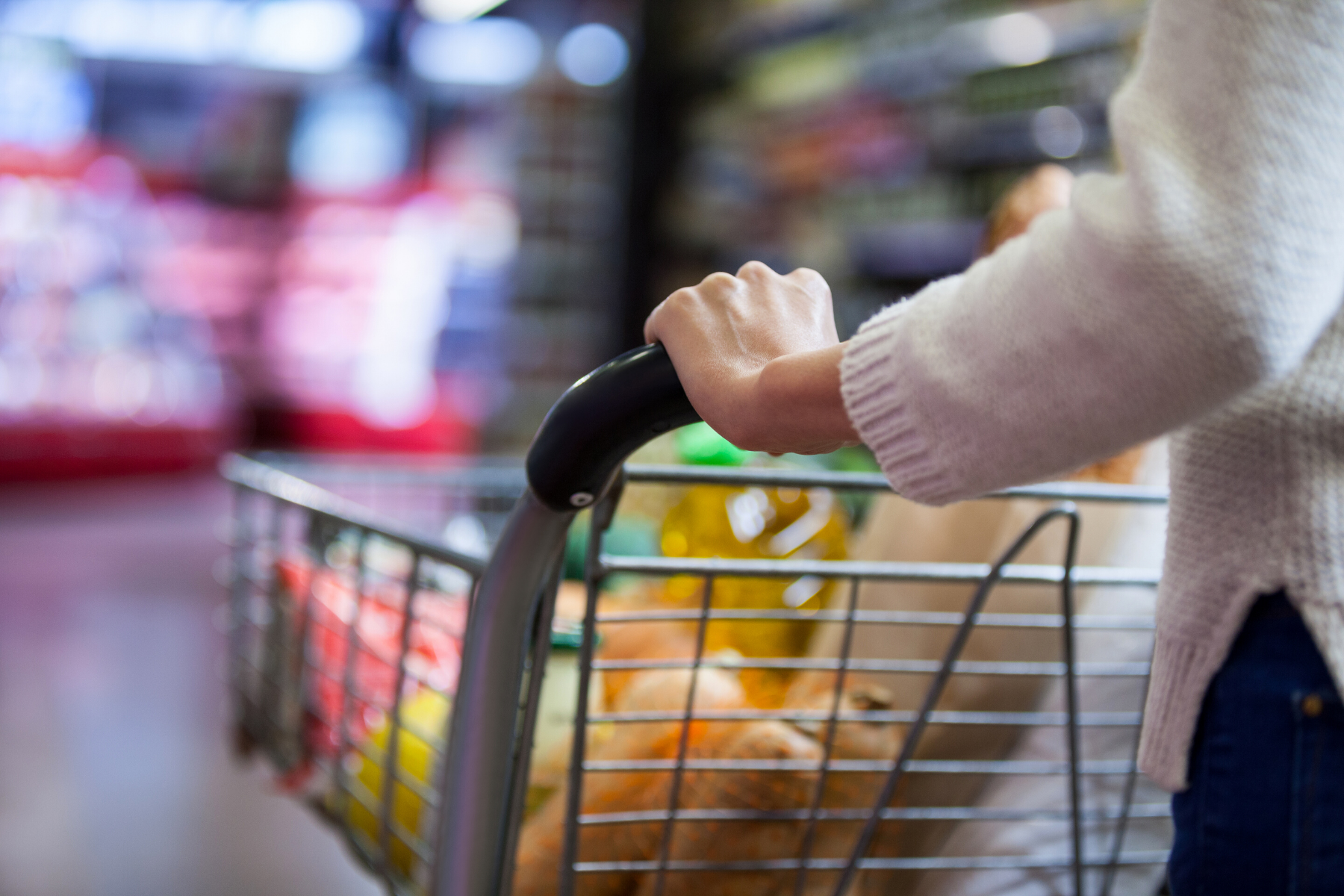by Amanda Ihmels, Oncology Dietician, Bismarck Cancer Center
As we navigate these stressful times, many are wondering how to safely shop, order, and prepare food to minimize transmission of the novel coronavirus. While there is no published evidence of contracting the coronavirus disease (COVID-19) from touching food that came in contact with the virus due to coughing or sneezing from an infected person, the virus causing COVID-19 can survive on surfaces and objects for a certain amount of time. This is the reason that we are strongly encouraged to wash our hands regularly, especially after touching frequently handled objects such as door knobs or handles. Most important, the primary method of transmitting COVID-19 is droplet spread from being close to an infected person, so social distancing is the most important way to reduce your risks.

Although we do not have evidence regarding specific dietary factors that can reduce risk of acute infections like COVID-19, we do know that eating a healthy diet, being physical active, and getting enough sleep are critical to keeping our immune system strong. Good nutrition is crucial for health, particularly in times when the immune system might need to fight back. Limited access to fresh foods may make it hard to continue eating a healthy and varied diet, and can lead to an increased consumption of processed foods with extra sugar and salt.
With all the uncertainties, we want to offer some strategies and resources to help maintain some of these practices. Do what you can, and try to have some fun along the way! The COVID-19 health crisis is creating a range of individual impacts, from food access issues, income disruptions, and emotional distress.
Grocery shopping
- The FDA recommends four steps for safely dealing with food: clean, separate, cook, and chill. These are standard food safety guidelines. Clean produce before preparing to cook it or eat it raw. Separate raw meats from produce and ready to eat foods. Cook and reheat foods to appropriate temperatures. And lastly, chill/freeze perishable foods.
- Plan ahead. Make a shopping list to maximize your panty, refrigerator and freezer space and to reduce how often you need to shop. Plan to visit the store during off peak hours and minimize your time in the store. Get in and get out as fast as you can.
- If possible, order groceries online for pick up or delivery. Many stores are offering these services for free or with minimal purchase requirements.
- Use hand sanitizer before entering the store and after leaving the store. Wear a non-medical face covering/mask once leaving your vehicle.
- Wipe down the cart or basket prior to using it. As noted, coronaviruses can remain on hard surfaces such as steel and plastic, so these are the highest risk surfaces to touch. Many stores are cleaning their carts and providing wipes for you to wipe down carts/baskets.
- Continue to social distance while shopping. By maintaining a distance of at least 6 feet as much as possible while shopping. Avoid sections of the store/aisles that have many people in that area. Wait for others to get their item and leave before you enter.
- Consider using self-checkout, this reduces you and the employee’s exposure.
- Handwashing remains a critical step in reducing the spread of COVID-19 and should be done often. After returning home and before preparing or eating food, wash your hands thoroughly with clean water and soap for a minimum of 20 seconds.
- COVID-19 is an ‘enveloped virus’, meaning that it is covered in an oily membrane. Fortunately, plain soap is very effective at disrupting the oil on surfaces, and water is effective at removing and rinsing away the virus.
Food delivery and takeout meals
- Ordering takeout or delivery meals supports local businesses that is now their only source of income. Consider looking for local fruits/vegetables from local growers and meats, chicken and eggs from local ranchers/butchers. Many have pick up series available.
- Food service establishments and delivery services should be following local health departments’ guidelines on food safety and regular screening of employees for COVID-19 symptoms. Many establishments now offer food deliveries with minimal contact, such as prepaying with a credit card over the phone, food being carried to a car for pickup, or food being left on the doorstep. According to the CDC, COVID-19 is not likely to be transmitted through food itself. Any risk would more likely come from close contact with the worker delivering the food. Once receiving the meal, transfer the meal from its packaging onto a plate, discard the packaging, and wash hands thoroughly with soap and water.
- Request that supermarket food deliveries be left on your doorstep and follow general food safety guidelinesfor handling food.
- When ordering takeout consider looking for healthier options. Meals that have vegetables or fruits as sides, avoid foods that have been fried and look for foods that have been grilled or roasted are great options.
